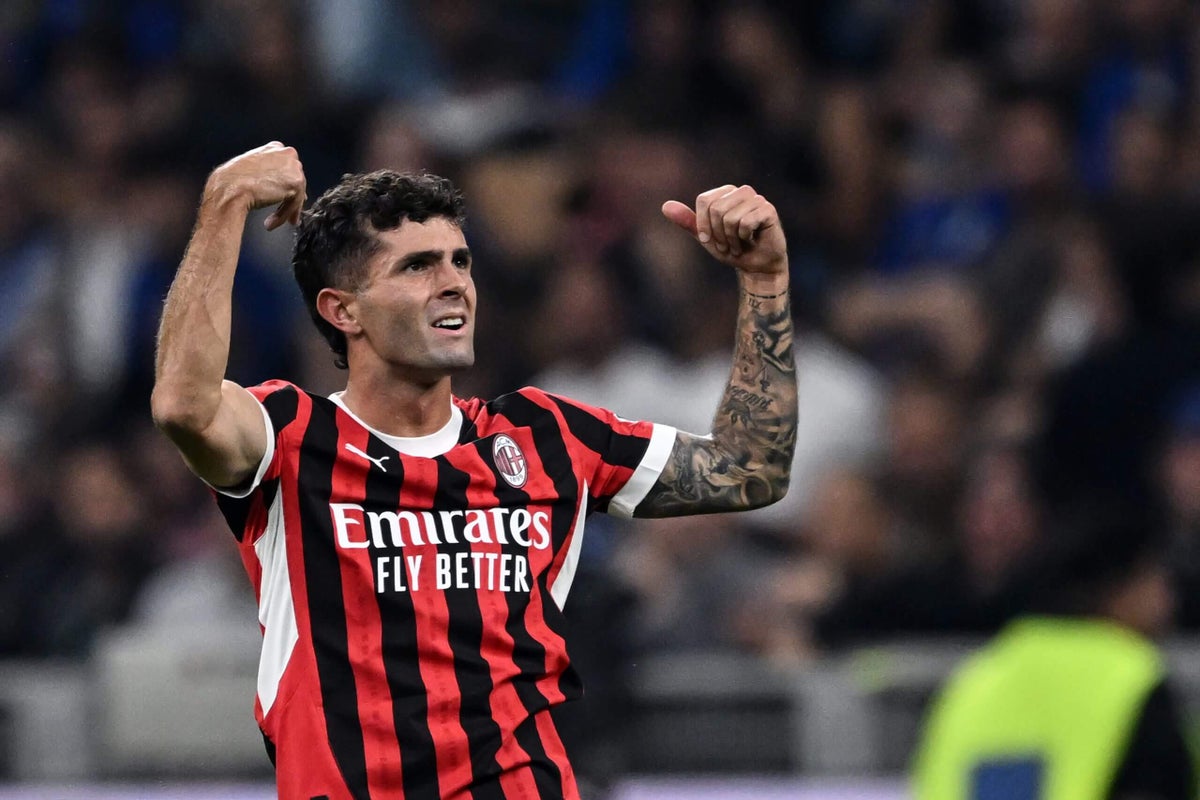The script was already written.
AC Milan’s head coach, Paulo Fonseca, was under pressure, his struggling team were up against Inter Milan, and a win separated Simone Inzaghi’s side from making history.
After six consecutive victories against their city rivals, Inter needed another one to ink their names into the record books.
Not only would Inzaghi have joined Helenio Herrera and Arpad Weisz as the Inter managers with the most wins in the derby (eight), but more importantly, a triumph against Milan would mean an unprecedented seven consecutive victories in a row against their rivals.
But football has a habit of not following the script.
Against expectations, Milan managed a 2-1 victory with a late header from Matteo Gabbia providing them with their first derby win in two years.
In a surprise move, Fonseca started with Tammy Abraham and Alvaro Morata up front for Milan, but the system was more of the same with the Spain centre-forward acting as a No 10 in front of Youssouf Fofana and Tijjani Reijnders. Meanwhile, Christian Pulisic maintained a narrower position down the right side.
In possession, Pulisic wanted to exploit the space behind Inter’s midfield alongside the dropping Morata.
In this example, the USMNT winger is positioned narrowly with Alessandro Bastoni, Inter’s left centre-back, marking him high up the pitch.
However, when Milan build up through their left side, Bastoni drops back to his position in the defensive line…

… which frees Pulisic for a couple of seconds. As Fikayo Tomori finds Reijnders’ forward dash in midfield, Pulisic roams inside behind the Inter midfield…

… and continues his run when the Netherlands midfielder carries the ball forward, although Reijnders doesn’t play the through ball.

Without the ball, Milan defended in a 4-2-4 with Pulisic and Rafael Leao flanking Morata and Abraham…

… but the interesting aspect of this approach was that Pulisic maintained his narrow role out of possession too, despite the threat of Inter’s wide centre-backs.
When Bastoni progressed down the left wing to assist Inter’s left wing-back, Federico Dimarco, Fofana moved across to cover for the American winger.


In this example, Pulisic signals to Emerson Royal and Fofana to handle Bastoni…

… so that the Milan winger maintains his narrow position.

Considering Inter’s ability in wide areas and the danger of their advancing centre-backs, Milan’s approach was risky. However, it meant that once Fonseca’s side regained possession and wanted to strike on the transition, Pulisic was in a position to cause damage.
Here, Milan win the ball back in their own half and start their attacking transition by finding the dropping Morata. Meanwhile, Pulisic’s initial narrow position means that he is close to the action when his side is countering.

In an attempt to defend the transition, Bastoni moves up towards Morata, but the striker plays the ball wide to Leao while Pulisic is running forward.

Bastoni then moves across to help Kristjan Asllani, which creates a gap in Inter’s defence. Pulisic attacks that space from his central position, but Leao shoots straight at Yann Sommer instead of finding the American’s run.

In another example, Pulisic’s out-of-possession role means that he is in a central position and closer to the ball than Bastoni when Milan start a counter-attack…

… which makes him a threat when Fonseca’s team progresses it up the pitch to Abraham. Pulisic’s positioning gives him an advantage over Bastoni…

… and his pace creates a three-versus-two situation on the counter, where Benjamin Pavard isn’t sure whether to commit to the American or switch his attention to Leao on the other side.
Pavard holds his position, and Abraham puts Leao in front of goal despite Pulisic’s call for the ball to be played into his path.

Leao’s shot is saved by Sommer, but Pulisic’s central position offers an alternative option.

Earlier in the game, Pulisic’s narrow positioning led to Milan’s first goal — albeit from an Inter throw-in on the opposite flank, when he is expected to be this far infield.
Here, Gabbia heads the ball towards Morata with Pulisic positioned behind Henrikh Mkhitaryan.

Morata then tries to flick the ball but it falls to the Inter midfielder, who has Pulisic on his blind side.

The American winger pounces and wins the ball back…

… before dribbling past the unorganised Inter defence and scoring to give Milan the lead.


Pulisic’s role without the ball meant that Milan were vulnerable against Inter’s advancing centre-backs and switches of play towards the wing-backs, which was clearly visible in the build-up to Dimarco’s equaliser when Nicolo Barella played the diagonal towards the left wing-back.
On the other hand, it readied Pulisic for the attacking transition and provided Milan with an advantage once they regained the ball. “He (Pulisic) is playing in one position more inside with bigger participation in the game,” Fonseca told CBS Sports after the game. “He’s scored in the last few games and is in a great moment.”
Eventually, it proved to be a risk worth taking by Fonseca. Milan’s head coach will now hope that this victory marks the start of a longer script with Milan rather than an abrupt end.
(Header photo: Image Photo Agency/Getty Images)

